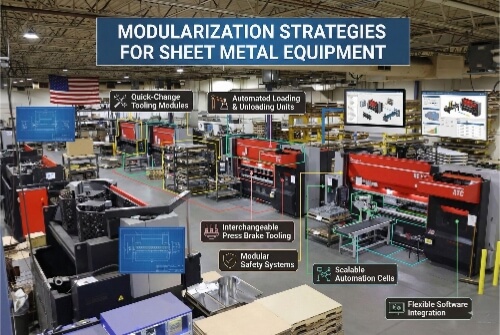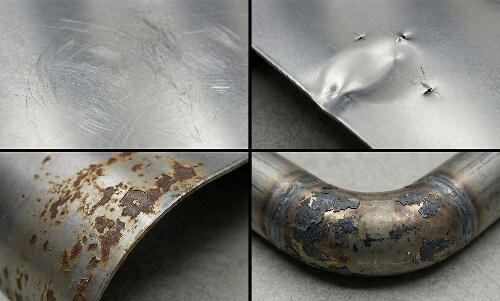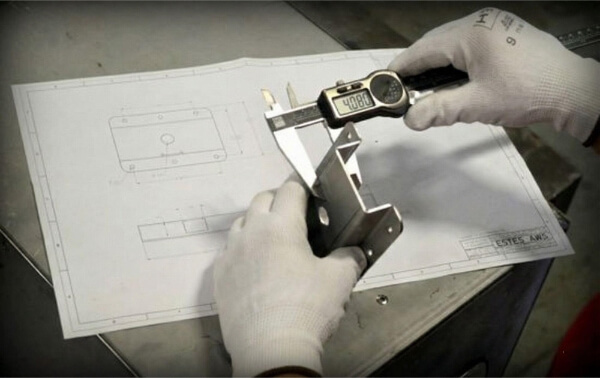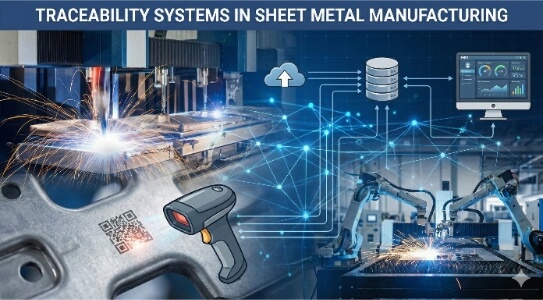In metal fabrication, cutting and bending often get the most attention. But what really shapes a part’s strength and look comes after those steps — the finishing. A proper surface treatment can transform a regular part into one that resists rust, wear, and the effects of years of use. Without it, even well-made components can fail prematurely.
Sheet metal finishing and coating protect parts from harsh environments. They enhance performance, improve appearance, and maintain the reliability of parts over time. Whether you’re designing parts, purchasing components, or managing production, selecting the right finish can significantly impact durability and quality.
This article examines several standard finishing and coating methods, including powder coating, anodizing, electroplating, and passivation. Each method has its own advantages. By understanding how different finishes affect strength, corrosion resistance, and appearance, you can make more informed choices that enhance your product’s performance and lifespan.
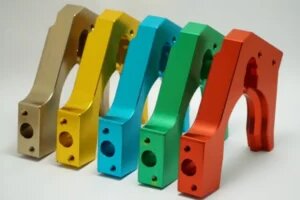
What Is Sheet Metal Finishing?
Sheet metal finishing is the final stage of fabrication that enhances a part’s appearance, strength, and performance. It uses mechanical, chemical, or electrochemical methods to treat the metal surface. These processes remove minor flaws, smooth rough areas, and prepare parts for coatings or paint. Finishing also adds a protective layer that helps prevent rust, corrosion, and surface wear.
A good finish can turn bare metal into a part ready for long-term use. It can stop oxidation in humid or outdoor conditions and reduce friction between moving parts. Finishes also make parts easier to clean and help them maintain their appearance for longer.
Common Types of Sheet Metal Finishing
Each finishing method has its own strengths depending on the part’s function and working environment. Below are some of the most popular and effective finishes used for sheet metal parts.
Bead Blasting
Bead blasting uses delicate glass beads and compressed air to clean and smooth metal surfaces. This process removes rust, oxidation, and machining marks while maintaining the part’s accurate dimensions. It creates a matte or satin surface with a roughness of around Ra 1.0–3.0 μm, making it a suitable base for later coating or painting.
It’s often used on stainless steel, aluminum, and mild steel. Bead blasting enhances coating adhesion and provides parts with a clean, even appearance that conceals minor surface imperfections. It’s an excellent choice when a consistent look and fine texture are required.
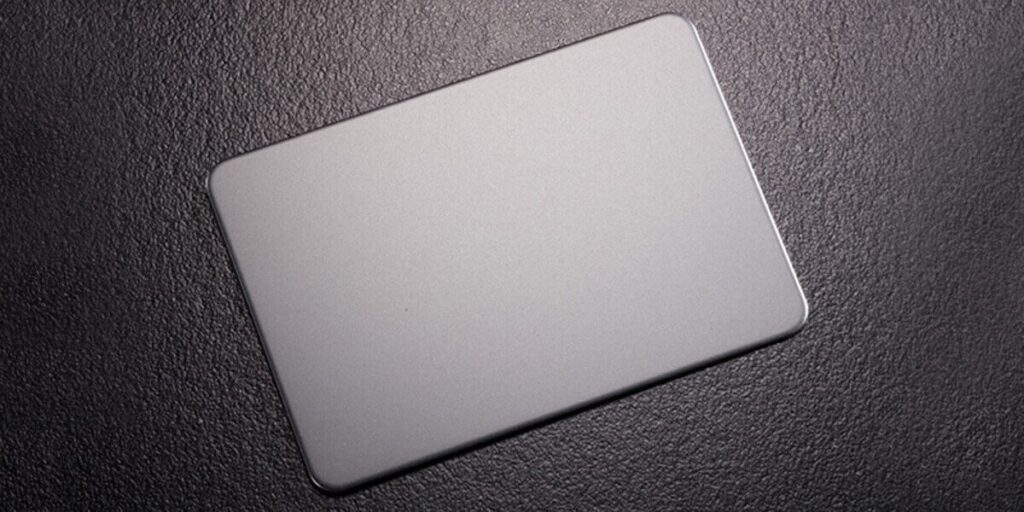
Powder Coating
Powder coating involves spraying charged powder particles onto a grounded metal surface, then curing them in an oven at 180–200°C. The melted powder forms a continuous, durable film between 60–120 μm thick.
This coating offers excellent protection against corrosion, impacts, and UV damage, making it suitable for both indoor and outdoor applications. Powder-coated parts maintain their color and gloss for years, exhibiting minimal fading or peeling. With countless colors and textures to choose from, this finish is widely used for enclosures, furniture, and machinery parts that need both strength and visual appeal.
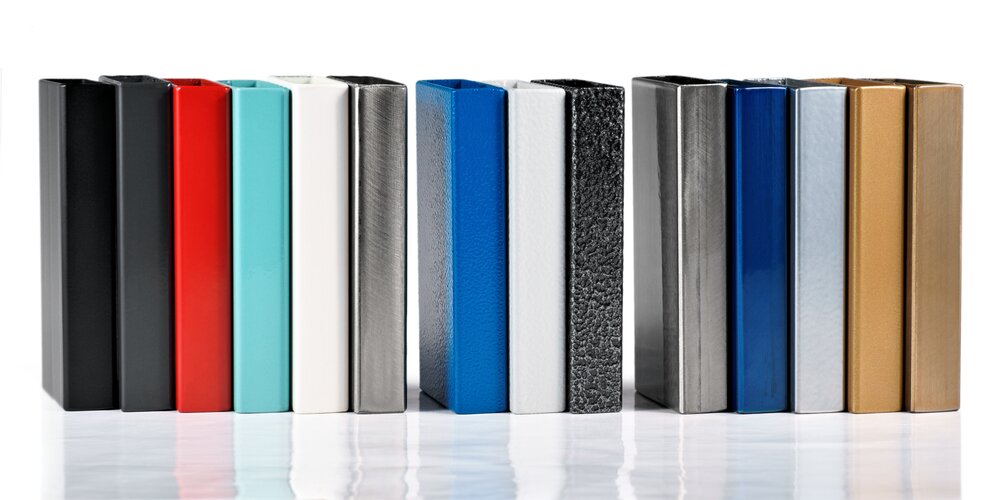
Painting
Painting adds a thin 30–50 μm layer of liquid coating to protect the metal and add color. The surface is cleaned and sometimes treated with a phosphate layer to enhance the paint’s adhesion. The parts are then baked at 120–150°C to cure the paint and increase durability.
Different paints are used for different purposes:
- Epoxy paint offers strong chemical resistance and is well-suited for industrial machines.
- Acrylic paint dries fast and works well for indoor furniture or displays.
- Polyurethane paint withstands sunlight and rain, making it ideal for outdoor applications.
Painting is flexible in terms of color and finish options, and cost-effective for prototypes or small batches. While not as tough as powder coating, it gives an attractive, easy-to-clean surface with solid weather protection.
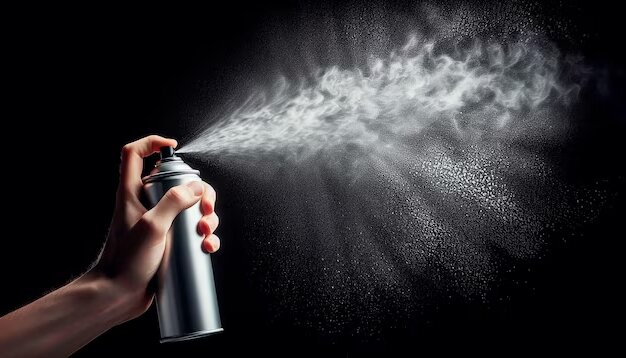
Electroplating
Electroplating utilizes an electric current to coat a part with a thin layer of another metal, such as zinc, nickel, or chromium. The coating is usually 2–25 μm thick.
- Zinc plating provides corrosion resistance and a shiny silver look.
- Nickel plating adds hardness and wear resistance.
- Chrome plating delivers a mirror-like finish with high durability.
Electroplated parts are commonly used in automotive, electronic, and decorative products, where both appearance and performance are essential.
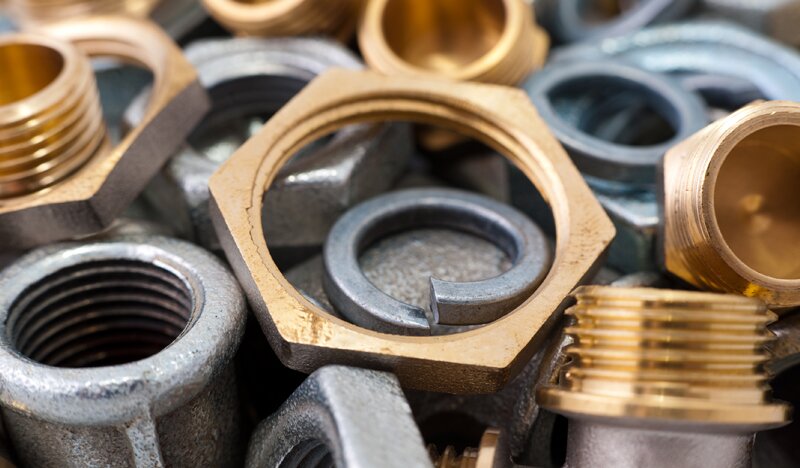
Anodizing
Anodizing is mainly used on aluminum to improve corrosion resistance and surface hardness. The aluminum part is placed in an acid bath, and an electric current forms a tightly bonded oxide layer that’s 10–100 μm thick.
Anodized aluminum can be dyed in a variety of colors. Because the dye is absorbed into the oxide layer, it won’t chip or peel. Afterward, the surface is sealed in hot water to close the pores and lock in the color.
- Type II anodizing (sulfuric acid) is common for consumer and architectural use.
- Type III anodizing, also known as hard anodizing, creates a thicker, harder layer for aerospace and industrial parts.
Anodized parts also offer strong electrical insulation, making them suitable for housings, heat sinks, and electronic components.

Passivation and Chemical Film
Passivation enhances the corrosion resistance of stainless steel by removing free iron and impurities from the surface. It forms a thin, invisible oxide film without changing the part’s appearance.
For aluminum, a chemical film coating such as chromate conversion provides similar protection. These coatings are fragile, typically measuring less than one μm, and maintain electrical conductivity while resisting oxidation. Both treatments are commonly used in enclosures and electrical assemblies where conductivity and corrosion resistance are essential.
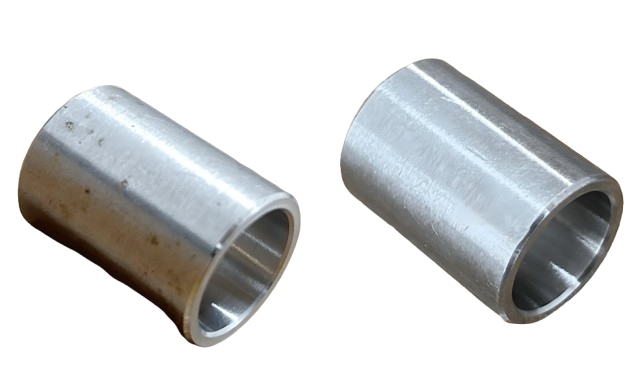
E-Coating
E-coating, also known as electrophoretic coating, applies paint evenly using an electric field. The part is submerged in a water-based paint bath, charged, and then baked at 160–190°C. The final coating is typically 20–35 μm thick, covering even complex shapes and tight corners.
E-coating offers smooth, glossy finishes with excellent corrosion resistance. It’s widely used in automotive and appliance production because it delivers consistent coverage, strong adhesion, and resistance to chipping and fading.
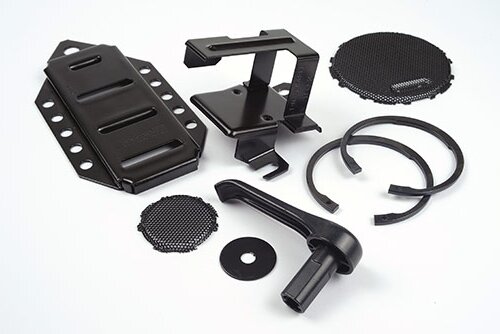
Hot Blackening
Hot blackening, also called black oxide coating, forms a thin black layer on steel or iron. Parts are dipped in a series of heated chemical baths that create an oxide layer about 1 μm thick.
This finish provides mild corrosion protection, reduces glare, and gives a uniform dark appearance. It’s commonly used for tools, fasteners, and precision parts that require a clean, professional look while maintaining tight dimensions.
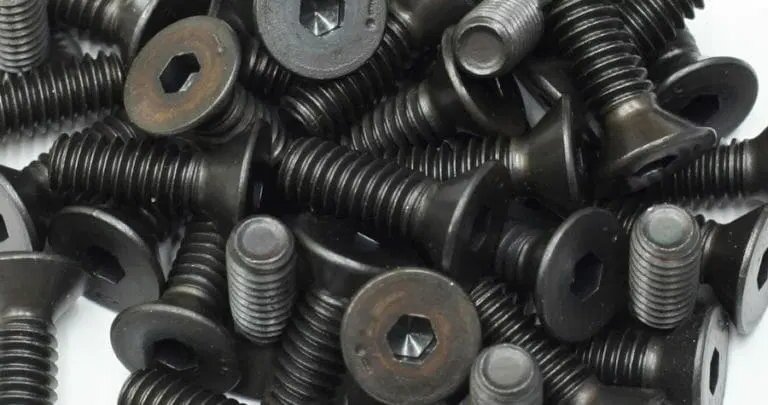
How Sheet Metal Finishing Enhances Performance?
Surface finishing does more than make parts look good — it has a direct effect on how well they perform and how long they last. Each type of surface treatment plays a crucial role in protecting the part and minimizing long-term costs.
Corrosion and Wear Resistance
Metal parts often face harsh conditions, such as moisture, chemicals, or friction. Without proper finishing, these factors can cause rust, oxidation, or surface wear. Finishes such as powder coating, anodizing, and electroplating create a protective layer that prevents these problems. For example, a powder-coated steel enclosure can resist outdoor weather for years, while anodized aluminum stays stable in humid or marine environments.
Finishes also protect against mechanical wear from repeated contact or movement. Hard anodizing and nickel plating make surfaces more complicated and more resistant to scratches or abrasion. By reducing corrosion and wear, surface finishing helps extend the life of the part and lowers maintenance costs — a key advantage in both production and daily use.
Aesthetic and Branding Benefits
A quality finish gives a product a professional, high-value appearance. Smooth, even coatings help parts look precise and durable, which strengthens customer confidence in the brand. Finishes, such as powder coating and painting, come in a wide range of colors and textures, providing companies with the flexibility to match their branding and design goals.
For consumer products, look and feel matter just as much as function. A satinized surface or glossy powder coat conveys quality and attention to detail. In addition to appearance, finishes also prevent fading and discoloration, helping products maintain their clean look over time.
Electrical and Thermal Performance
Some finishes enhance a part’s ability to handle electricity or heat. Nickel or copper electroplating enhances electrical conductivity, making it ideal for use in terminals, connectors, and electronic components. On the other hand, anodized aluminum provides insulation where parts need to block current flow, such as housings or heat sinks.
Finishes can also enhance heat transfer. Protective coatings that reduce oxidation maintain stable thermal performance, especially in components such as power supplies or LED modules. Selecting the right finish based on electrical or thermal needs ensures the part operates safely and efficiently in real-world conditions.
How Do You Choose the Right Sheet Metal Finish?
Every part has different performance needs, and the best finish depends on where and how it will be used. The right choice improves both function and appearance. Here are the main points to consider when selecting a finish.
How Do You Match the Finish to the Material?
Different metals respond differently to finishing methods. The base material determines what treatments will bond well and provide lasting protection.
Aluminum works best with anodizing, which enhances hardness and offers a range of color options. It also pairs well with powder coating or painting when extra corrosion resistance or decoration is needed.
Stainless steel benefits most from passivation and bead blasting, which clean and protect without reducing its natural corrosion resistance. For a darker or shinier look, E-coating or electropolishing can be used.
Mild steel needs stronger protection since it rusts easily. Zinc plating, powder coating, and painting are common choices to form a solid barrier against moisture and oxidation.
Copper and brass are often used with transparent coatings or nickel plating to prevent tarnish while keeping their metallic color. Since every metal reacts differently to its environment, selecting a compatible finish ensures both long-lasting performance and an attractive appearance.
| Finish | Carbon Steel | Stainless Steel | Aluminum | Copper Alloys | Galvanized Steel |
|---|---|---|---|---|---|
| Black Oxide | Suitable for tools, fixtures, and fasteners; adds mild corrosion resistance. | Not typically used. | Not suitable. | Not suitable. | Not suitable. |
| Electroplating | Used for zinc, nickel, or chrome coatings to improve appearance and corrosion protection. | Usually unnecessary due to natural corrosion resistance. | Not commonly used. | Often used for decorative or protective nickel and chrome finishes. | Not recommended. |
| Anodizing | Not suitable. | Not suitable. | Common for aluminum parts; improves wear resistance and color stability. | Not suitable. | Not suitable. |
| Painting | Common, low-cost finish; adds corrosion and weather protection. | Works as an extra barrier layer; customizable colors. | Flexible finish for prototypes and consumer products. | Provides color and tarnish resistance. | Often used for outdoor parts needing visual uniformity. |
| Powder Coating | Provides durable and impact-resistant coating; used for machinery and outdoor parts. | Ideal for industrial applications needing both durability and appearance. | Popular decorative finish with strong corrosion protection. | Applied for long-lasting color protection. | Enhances corrosion resistance on pre-coated parts. |
| Passivation | Not applicable. | Improves corrosion resistance and surface stability. | Not suitable. | Not suitable. | Not suitable. |
| Polishing | Enhances surface smoothness and improves appearance. | Produces mirror or brushed finish. | Improves reflectivity and smoothness. | Used for decorative enhancement. | Improves surface look and cleanliness. |
| Sandblasting | Cleans oxidation and prepares surfaces for coating. | Removes scale and enhances surface adhesion. | Creates a uniform matte texture. | Used to clean and texture before finishing. | Prepares surface for painting or powder coating. |
What Is the Part’s Operating Environment?
The environment has a significant impact on the lifespan of a fish. Parts used in humid, salty, or chemically rich settings require high corrosion resistance. Powder coating and anodizing are well-suited for outdoor or near-water applications. For indoor applications, electroplating or passivation typically provides sufficient protection.
When parts are exposed to heat, friction, or contact with other components, select finishes that can withstand mechanical wear. For medical or food-grade equipment, smooth and cleanable finishes, such as polished stainless steel or anodized aluminum, are ideal.
What Are Your Performance Needs?
Each finish offers different mechanical and functional benefits. For abrasion resistance, use hard anodizing or nickel plating. For electrical conductivity, choose zinc plating or chemical film coating, which maintains good contact between metal surfaces.
If visual consistency is your goal, E-coating and powder coating give uniform color and gloss. Moving parts benefit from smoother surfaces that lower friction and prevent premature wear. Matching the finish to your part’s purpose helps maintain performance and reliability over time.
What Are Your Budget and Timeline Constraints?
Cost and schedule often guide finishing decisions. Spray painting and bead blasting are affordable and fast, making them suitable for prototypes or small-scale production runs. Powder coating and E-coating require longer setup times but are more efficient for mass production.
If time is limited, choose finishes with short curing or drying times. For long-term savings, investing in durable finishes can reduce future maintenance and replacement costs.
What Look Do You Want to Achieve?
The surface finish defines how the product looks and feels. A matte or brushed finish gives an industrial style, while chrome plating or glossy powder coating creates a modern, high-end look.
Color, shine, and texture influence how customers perceive quality. Designers often select finishes that match their brand’s image while striking a balance between performance and cost.
Shengen’s Finishing and Coating Capabilities
At Shengen, we support projects from prototype to production. We offer a complete set of finishing and coating services. We focus on stable quality and fast lead times.
We run several in-house finishing options to keep control and speed:
- Powder Coating: We offer a variety of textures and gloss levels. The coating bonds well and lasts outdoors. It suits enclosures, frames, and structural parts.
- Painting: We match colors quickly for prototypes and small runs. The finish looks smooth and clean.
- Bead Blasting and Sandblasting: We clean and smooth the surface before coating. The matte texture helps paint or powder stick better.
- Polishing and Brushing: We enhance the appearance, remove fine scratches, and achieve a satin or mirror finish.
We also partner with trusted surface treatment shops for special needs:
- Anodizing (Types II and III): We enhance aluminum with improved wear and corrosion resistance. We offer transparent, black, and custom colors.
- Electroplating: We add zinc, nickel, or chromium for protection or enhancement of appearance. We also improve conductivity where needed.
- E-Coating: We deliver a smooth, even film on complex shapes. The result looks premium and consistent.
- Passivation: We treat stainless steel to enhance its corrosion resistance without altering its appearance or surface texture.
You can send us your drawings and specs. Our team will review your material, review your goals, and assess your budget. We will prepare a precise quote with lead time and technical notes.
Our engineers can help you compare choices. We can explain when powder coating outperforms anodizing, as well as when another finish is a better fit. Share your part details, and we will provide a free surface treatment consultation and pricing.
FAQs About Sheet Metal Finishing
Here are answers to some common questions about sheet metal surface finishing and coating. These details can help you plan your finishing process with clear expectations.
Can I Customize the Color or Texture of My Finish?
Yes. We offer full-color customization in accordance with RAL or Pantone standards. Powder coating, painting, and anodizing can achieve a wide range of colors and surface textures — from soft, matte finishes to shiny gloss. For brand matching, we can run sample tests before production to confirm color accuracy and consistency.
How Thick Are the Coatings Usually Applied?
Coating thickness varies by finish type and functional needs:
- Powder Coating: 60–120 μm
- Spray Painting: 30–50 μm
- Anodizing: 10–100 μm (depends on Type II or Type III)
- Electroplating: 2–25 μm
- E-Coating: 20–35 μm
Our technicians check coating thickness throughout production to ensure uniform coverage and proper protection.
What Is the Typical Lead Time for Finishing?
Lead time depends on the process and order size. Simple finishes, such as bead blasting or painting, typically take 3–5 days for small batches. More advanced finishes, such as anodizing or electroplating, may take 7–10 days, including surface preparation and inspection. Large production runs are planned to ensure both high quality and a quick turnaround.
Can Parts Be Reworked or Refinished If Needed?
Yes, in most cases. Coatings such as paint, powder coating, or anodizing can be stripped and reapplied. The exact process depends on the material and type of finish. Thin aluminum parts, for example, need careful handling to prevent damage. Before rework, our team inspects each part to find the safest and most cost-effective solution.
Do You Offer Certifications or Quality Testing?
Yes. All finished parts go through adhesion, thickness, and surface inspections before shipping. Upon request, we can provide RoHS certificates, salt spray test results, and hardness reports to meet the specific quality requirements of your project.
Hey, I'm Kevin Lee

For the past 10 years, I’ve been immersed in various forms of sheet metal fabrication, sharing cool insights here from my experiences across diverse workshops.
Get in touch

Kevin Lee
I have over ten years of professional experience in sheet metal fabrication, specializing in laser cutting, bending, welding, and surface treatment techniques. As the Technical Director at Shengen, I am committed to solving complex manufacturing challenges and driving innovation and quality in each project.

